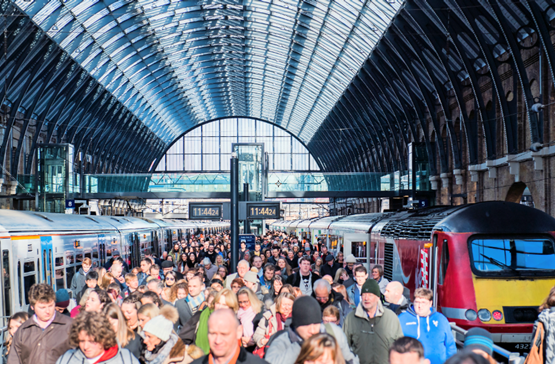 Read the peer reviews for this feature
Read the peer reviews for this feature
“Radical changes to rail fares that would guarantee customers simpler fares, and the best possible deal every time they travel, are set to be trialled by train companies.”
That was the headline from the Rail Delivery Group in February, in what it terms an “action plan”. The trials will start in May - new pricing, simpler routes, clearer choices.
This has been welcomed by everyone. The entire industry recognises that a system which offers in excess of 16 million different fares is untenable. Administration is clumsy, and passengers are put off by a level of complexity they cannot possibly be expected to understand.
But hang on. This has been tried before. And every time the industry has set out with good intentions, it has stumbled. The institutional barriers to change have been too great.
Here’s a Department for Transport news release from September 18 2013: “Rail Minister Norman Baker has announced a pilot scheme that could see all long-distance rail tickets sold on a single-leg basis, and allow passengers to mix and match each ticket type when planning a return journey. ‘I am determined to end this confusing and frustrating system… and this is proof of our determination to make that happen,’ said the Minister.”
Sound familiar? Like many initiatives before it, this one came to nothing. But this time will be different, according to the organisations involved, perhaps because it is being led by the railway and not by the Government.
At its heart lies confusion about how the railway wishes to present itself. Is it an old-style public transport system offering a regulated, published and predictable fixed price for every journey? Or is it willing to embrace the efficient demand management long favoured by airlines, to ensure that every seat is filled by varying the price?
The industry wants to make best use of its capacity. That way lies value for money for both taxpayers and passengers. But the public will not give up the public transport ethos of being able to walk onto a platform, buy a ticket for the next train to anywhere, and know exactly what it is going to cost.
The trials will test three examples of the need to modernise rail fare choices:
- East Midlands Trains will test a relaxing of regulations that were set when the direct service between London and Sheffield was infrequent, when longer routes with changes of train were normal. These journeys are no longer commonplace, as the cities are linked by two fast trains an hour.
- Virgin will test single-leg pricing on London-Glasgow and London-Edinburgh.
- CrossCountry will offer best-price through fares where customers change trains, to remove split ticketing. It will combine the cheapest fare for each leg. It is currently obliged to offer regulated through tickets for very long connecting journeys even where combinations of tickets can prove much cheaper.
- There will also be measures to make ticket vending machines more user-friendly.
“You can model these things on a computer, but at some point you actually have to try them out on passengers,” says Transport Focus Chief Executive Anthony Smith.
“It is an enormous step forward. It is something nobody has had the courage to do before. What is different this time is that the industry, with our support, has given the Government sufficient comfort to trial something which might reveal the impact of these changes in the real world.
“We will learn who the winners and losers will be, and the magnitude of those wins and losses. Some people will end up paying more, and they will complain. That’s what has worried the Government before. The winners will presumably keep quiet.”
The devil will be in the detail. On many journeys under the current system, a return fare is £1 more than the single. This is clearly a nonsense, but a nonsense which nobody has corrected since the railways were privatised.
If the return fare between two towns is £50, and the previous single £49, should the single now be £25? That way no passenger would pay more for a return, but those going one way would save £24. This would clearly be best for passengers, but could reduce revenue for the operator.
Or do you increase the return fare to £60 and price the single at £30? There would be winners and losers, but the changes could be revenue-neutral.
“It is understanding how passengers react to this in the real world that matters,” says Smith.
“Would the lower single fare actually boost revenues by encouraging more people to travel? These are tremendously important decisions, because they will form the basis of fares regulation for years to come.
“For too long, unfair fares have been the elephant in the room. The ability to chunk up a journey into separate parts, which are considerably cheaper overall, totally undermines trust in the system. Split ticketing, driven by algorithms on computers, is a disrupting force that will destroy a coherent system by leaving a legacy of inconsistencies and anomalies under which the system will eventually collapse.
“Winning the trust of passengers, by getting them the best available fares, is absolutely central to this trial.”











